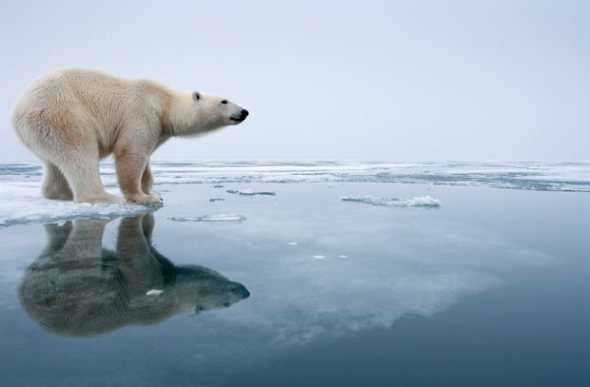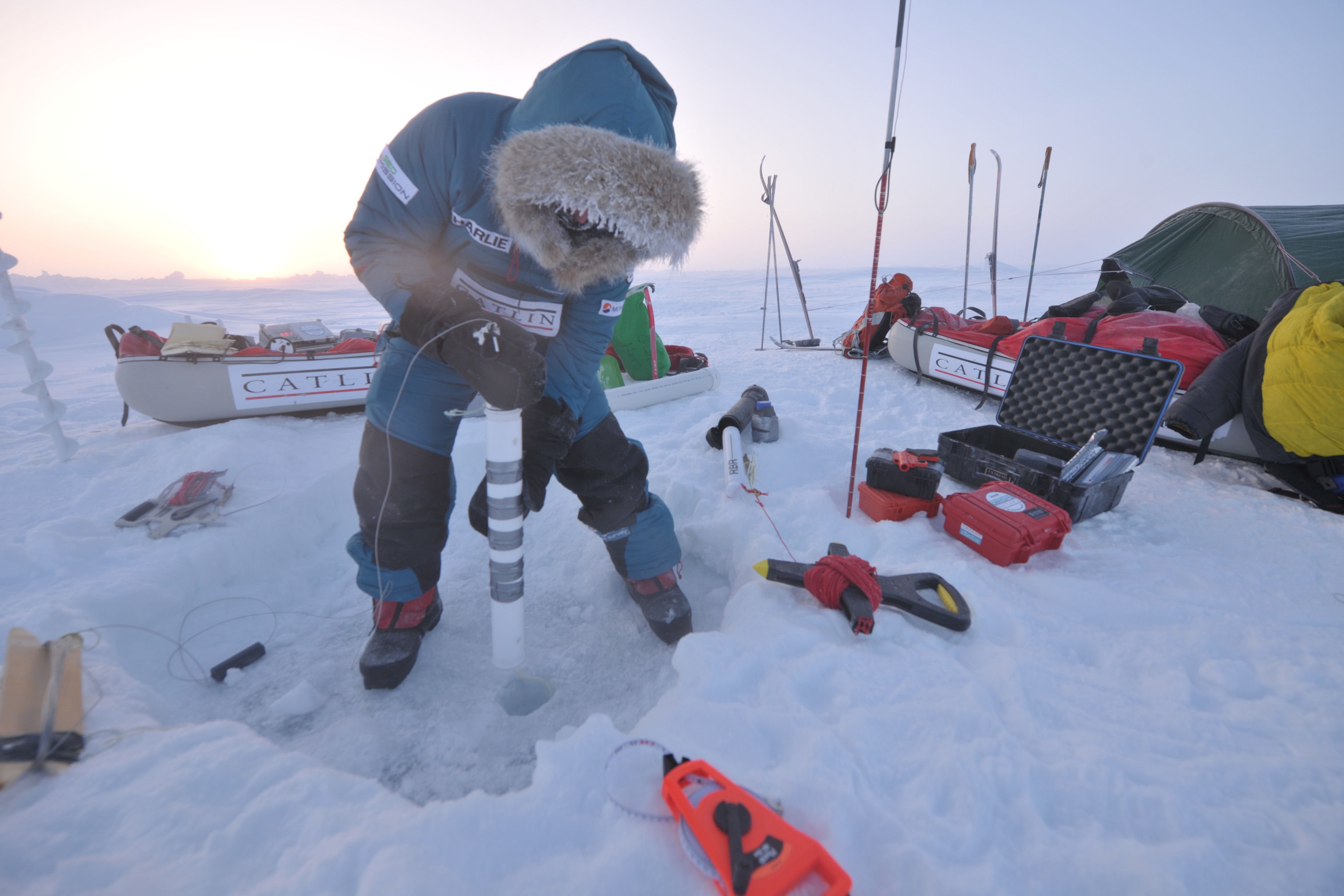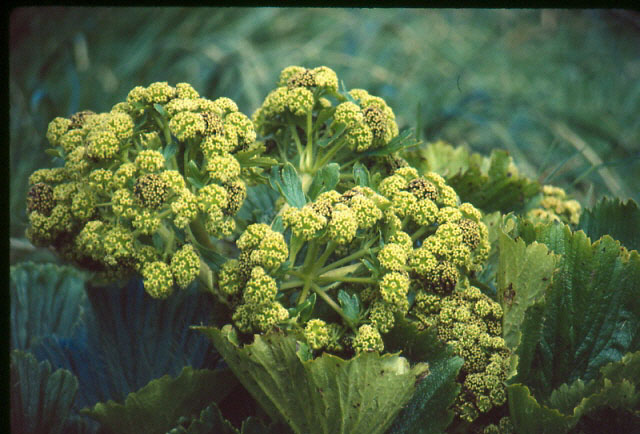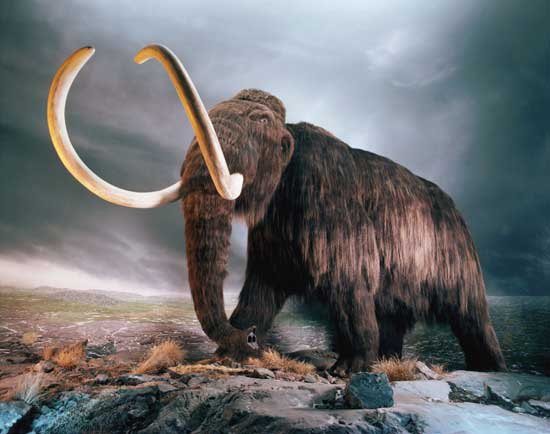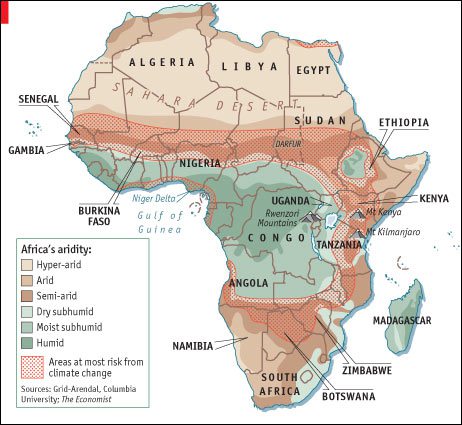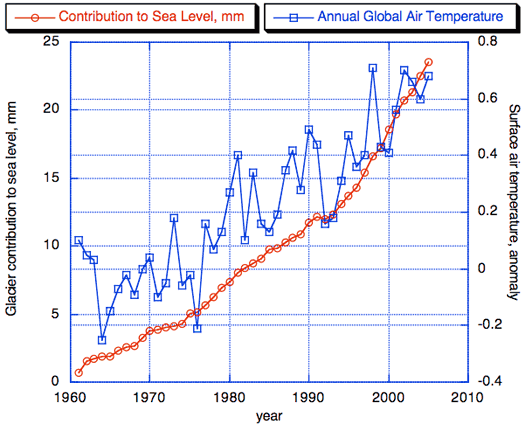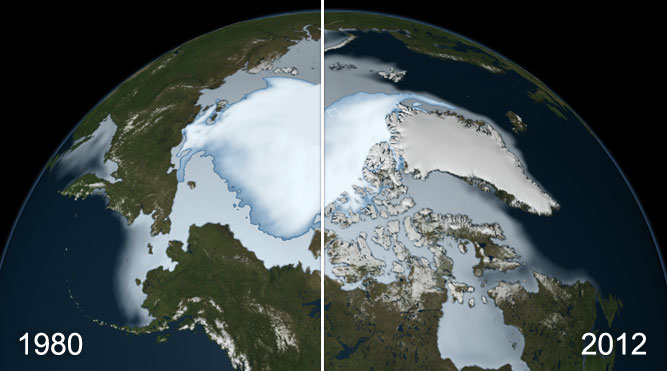Environmentalism Chapter 4 - Antarctica
Antarctica is the fifth largest mostly uninhabitable continent on the planet, situated in the Antarctic region of the southern hemisphere it is the coldest, driest and most and windiest continent on the planet that see’s temperatures drop to at least -90 degrees.
Surrounded by the southern ocean Antarctica is located south of the Antarctic Circle, although rarely uninhabitable the size of Antarctica is gigantic being larger than that of Africa, Asia, the Americas and twice the size of Australia
One mile in thickness from surface layer to the rock bed beneath the entire Arctic Circle is primarily made up of 100% ice although now slightly decreasing to around 96% in total land mass. Although the entire flats of Antarctica are uninhabitable there are around 8,000 or more scientists and researchers that frequent the area to undertake scientific analysis from rock, ice, and animal and climate research.
Animal and plant life that live within Antarctica are that of the Nematodes, Algae, mites, penguins, seals, polar bears, bacteria and fungi that thrives in the worlds coldest and largest land ice dessert. The growth of any vegetation is very slim. Only two native vascular plants, the Antarctic hair grass Deschampsia antarctica and a cushion-forming pearlwort, Colobanthus quitensis, survive south of 56°S. They occur in small clumps near the shore of the west coast of Antarctic Peninsula.
Of all the plants, lichens are best adapted to survive in the harsh polar climate. Some lichens have even been found only about 400 km from the South Pole. Lichens have proliferated in Antarctica mainly because there is little competition from mosses or flowering plants and because of their high tolerance of drought and cold.
The peculiarity of lichens is that they are not one homogeneous organism but a symbiosis of two different partners, a fungus and an alga. The fungus part supplies the plant with water and nutritious salt, meanwhile the alga part organic substance, like carbohydrate produce.
With this ideal “job-sharing”, lichens can survive the hardest conditions. Far from the border of highly developed plants, lichens are the pioneers of the vegetation. Lichens aren’t only frugal and robust, they jug out because of their very low sensibility against frost. Some lichens, in an experiment, survived a bath in liquid nitrogen at minus 195 degrees.
Several mushrooms have been found on the west coast of the Antarctic Peninsula, and on the South Shetland Islands. A few of the fungi found in Antarctica are unique to the continent. The majority, however, are also found in most temperate areas.
Within Antarctica there is also an abundance of mammals, aquatics and avian species. Albatross, Emperor Penguins, Southern Giant Petrel, South Polar Skua, Squid, Terrestrial animals of the sub and maritime Antarctic include arthropods (primarily springtails and mites), earthworms and molluscs. Higher insects include spiders, beetles and flies. Although being bitterly cold the Antarctic holds much more life “within” and below that scientists are now keen to locate before the ice cap does well and truly melt causing catastrophic damage to the entire planet.
Antarctica Pearlwort
The Terra Australis, better known as Terra Australis Ignota was the first real located mass of Antarctica located back in the 1800’s (1820’s) in the “southern part” of the hemisphere although this was literally in comparison to the 1900’s a very small observation.
The first real discovery and documentation of the Antarctica was discovered in the 1950’s. In the early nineteenth century the entire continent of Antarctica was left untouched as there simply was not the correct technology to resources and adequate clothing to sustain the Arctic climate and its deadly killer weather.
Captain James Cook was the first to cross the Antarctic Circle on the 17th of January, 1773, and reached latitude of 67 degrees 15 minutes south. It is not clear whether or not he actually set eyes on Antarctica since the ice pack prevented any further southward progress.
In January, 1820, as a result of an earlier expedition where he was blown off course, the British Royal Navy sent William Smith as pilot with Edward Bransfield to search the waters south of the newly claimed South Shetland Islands. It is subsequently claimed that they are the first to see the Antarctic Peninsula.
On the 27th of January, 1820, Russian, Fabian Gottlieb von Bellinghausen, became the first person to see the Antarctic continent. In January, 1821, Bellingshausen returns to the Antarctic and completes a circumnavigation of Antarctica being only the second explorer, after Cook, to do so.
In February, American sealer John Davis arguably becomes the first person to land on the Antarctic continent. A Norwegian scientist immigrant to Australia, Carsten Egeberg Borchgrevink (1864-1934), became the first man to set foot on the Antarctic when he stepped on to Cape Adare on the 24th of January, 1895. From 1894-95 he devoted his time to exploration of Antarctica. He attempted to reach the South Pole in 1897. During this expedition, he was the first to discover lichen in the Antarctic, and reached latitude of 78 degrees 5 minutes south.
Professor Carsten Egeberg Borchgrevink was the first scientist to discover the Lichen species within Antarctica this then filled the jig saw that then gave arise to the formation of plant, human and non –human life. The modern ecological succession was then fully discovered that showed Lichens being the first living species on the plant that could withstand temperatures of -70, this then formed the full evolution diagram of the botanical system working up from ground bacteria to Lichens and mosses, and then the non-artic plants from grasses to ferns, herbaceous plants, shrubs then tress.
http://www.antarctica.gov.au/about-antarctica/history/people/tannatt-edgeworth-david
December the 1st 1959 saw the Artic treaty signed that then entered in to force in 1961 signed by fifty internationally recognised nations. The Artic treaty forbids any nation from damaging the Artic through wars and sets aside Antarctica as a scientific preserve, establishes freedom of scientific investigation and bans military activity on that continent. The treaty was the first arms control agreement established during the Cold War. The Antarctic Treaty Secretariat headquarters have been located in Buenos Aires, Argentina, since September 2004.
The full Antarctica treaty can be read here http://www.ats.aq/documents/ATCM32/op/atcm32_op022_e.pdf
The treaty was set up to enforce the following “main points” below
- Antarctica shall be used for peaceful purposes only (Art. I)
- Freedom of scientific investigation in Antarctica and cooperation toward that end … shall continue (Art. II).
- Scientific observations and results from Antarctica shall be exchanged and made freely available (Art. III).
Some people may think that Antarctica is just a mass of ice rock with larger land mass underneath however it is by far much more important and holds locked within the ice and ice flow below an amdundance of microscopic life forms, bacteria, along with history and thousand year old historical living data on how the world has evolved since the last ice age some 100,000 years ago that ended 11,700 years ago. That whole period can be regarded as the last ice age, though it was also complex, with varying climate.
The coldest ere of the Arctic when massive glaciers extended as far south as Britain, happened between 25,000 and 20,000 years ago of which we call it the last glacial maximum.
So why worry, we know it’s there, and a few hundred species inhabit Antarctica plus a few migratory birds and lots of ice?
On average using scientific data, water, ice analysis and climatological analysis it’s been estimated that there is an ice age every 100,000 years, and from this data we have amassed a “time frame” of when the next ice age is going to be. This period will be in the next seven thousand years. Or will it?
During an ice age, the polar glaciers grow larger. At the height of an ice age, glaciers may cover as much as a third of the Earth. Canada, the northern United States, northern Europe, and northern Russia all get covered by ice. This ice can be more than a mile (1.6 kilometers) thick.
Much of the world’s water gets frozen to make these glaciers. This water comes from the oceans, and sea level drops as a result. Places that had been under water become dry land. Many plants and animals adapt to these changes. Those that do not adapt die out.
During the last ice age, animals with warm shaggy coats flourished. For example, the woolly mammoth, a large elephant-like animal, roamed icy areas of Earth. The mammoths probably used their huge tusks to scrape away the snow in search of plants to eat. Their thick woolly coats protected them from the cold.
So cutting it brief when the next ice age arrives the worlds temperatures will plummet to -40 and the glaciers will cover most of the European Union, England, America, Canada and Asia, with very few continents being left untouched. What can adapt will adapt and what cannot will simply die. When we say “ice age” we mean ice covering 80% of the planet’s surface, if it does that is. Climate change is now effecting the next ice age on a drastic level.
For many years now as the world has been hit by floods, high lows and depressions to peculiar weather patterns, government scientists have denied to even publically placing “very quietly and covertly” without media attention that climate change is “not happening”.
Those handful of “bodies” wanted to keep consumerism and profits high and government gold diggers happy within the coal, petroleum, oil and gas industries, and it worked with many people attacking those that were shouting from the roof tops that climate change destruction via human negligence was killing the earth and would hit us all hard in the years to come, Asia and America to Africa where the culprits of this public misinformation that quoted in many reports the same non-factual evidence highlighted below in brief.
- Climate change is not occurring
- The global climate is actually getting colder
- The global climate is getting warmer, but not because of human activities
- The global climate is getting warmer, in part because of human activities, but this will create greater benefits than costs
- The global climate is getting warmer, in part because of human activities, but the impacts are not sufficient to require any policy response
By quoting such arguments and non-factual data it then made people more arrogant that then turned on the climatologists and environmentalists that caused major disbelief and mistrust within the meteorological service. This was a very bad mistake by government spin columnists and doctors that caused a serious of major wrong doings listed below.
- Over obsessive consumerism
- Impulse purchasing
- Construction on a high level in “danger zones”
- Birth rates to increase
- Higher fossil fuel consumption
- Oil, gas and petroleum, and electricity giants drilling and exploring and searching for more fossil fuels
- Carbon emissions went through the roof
- Greener energy being ignored
The main reason the Asian, American, and African governments didn’t want you to “know” that climate change was here was due to demand for the fossil fuels and the prices they were being paid for it via overseas exports.
Whilst the government scientists where lying to you all consumer spending went out of the roof, with retailers reporting massive high’s along with carbon emissions grossly increasing to now out of control thus why more drilling is needed for fossil fuel usage when we should be moving onto alternative and greener energies to stop the planet from self-destructing.
After 15 years of increasingly definitive scientific studies attesting to the reality and significance of global climate change, the deniers’ tactics have shifted. Many deniers no longer deny that climate change is happening, but instead argue that the cost of taking action is too high—or even worse, that it is too late to take action. All of these arguments are false and are rejected by the scientific community at large.
Scientists where very idiotic in taking this step even though the proof was there and a leaked document to Greenpeace showed that climate change was a grave and concerning issue. The damage has been done though to Antarctica and what we are experiencing now as stated in previous documents is not “global warming” of which one could of (ceased) to a point. We now view climate change of which one now has to adapt too.
Despite the international scientific community’s consensus on climate change, a small number of critics continue to deny that climate change exists or that humans are causing it. Widely known as climate change “skeptics” or “deniers”, these individuals are generally not climate scientists and do not debate the science with the climate scientists directly—for example, by publishing in peer-reviewed scientific journals, or participating in international conferences on climate science. Instead, they focus their attention on the media, the general public and policy-makers with the goal of delaying action on climate change.
Not surprisingly, the deniers have received significant funding from coal and oil companies, including ExxonMobil, (how coincidental). Who are these deniers though? http://www.motherjones.com/politics/2005/05/put-tiger-your-think-tank there all listed here within the link from think tanks, to non-governmental organisations, religious groups, anti-abortion groups, “Arizona State University” that shocked us considering they have been working on new initiatives to produce “greener fuels” from the formulation of Algae’s.
In total there was $8 million dollars freely given to compulsively LIE to the public from 2005-2008 of which not one of these “paid liars” where educated into speaking in climatological studies nor have they been held accountable for their mistakes that has seen over $300 billion in damages caused to the states of America “alone” from 2000-2011.
Ex-president George W Bush 2001-2009 the 46th American president could of ceased these skeptics and governmental spin doctors however he was “part of the problem and lies” that ordered these skeptics to announce such damaging data. Who paid for these lies to be formulated? You did the International tax payer, most concerning though who pays in the long run as of this ignorance “we all do” every single citizen on the planet that is now experiencing climate change, high fuel prices to drive down the “usage” of vehicles, skyrocketing retail and grocery prices as of climate change and crop destruction.
Te above map illustrates areas at risk from crop damage through climate change and being a third world nation this is the last continent that one should be seeing such effects. Africa has gone through enough high intensities of climate destruction would kill millions through famine, and cause massive human displacement.
This discrepancy is largely due to the media’s drive for “balance” in reporting. Journalists are trained to identify one position on any issue, and then seek out a conflicting position, providing both sides with roughly equal attention. Unfortunately, this “balance” does not always correspond with the actual prevalence of each view within society, and can result in unintended bias. This has been the case with reporting on climate change, and as a result, many people believe that the reality of climate change is still being debated by scientists when it is not.
While some level of debate is useful when looking at major social problems, society must eventually move on and actually address the issue. To do nothing about the problem of climate change is akin to letting a fire burn down a building because the precise temperature of the flames is unknown, or to not address the problem of smoking because one or two doctors still claim that it does not cause lung cancer. As the United Nations Framework Convention on Climate Change (UNFCCC) http://unfccc.int/2860.php acknowledges, a lack of full scientific certainty about some aspects of climate change is not a reason for delaying an immediate response that will, at a reasonable cost, prevent dangerous consequences in the climate system.
But what does all this have to do with Antarctica?
I would be lying if I quoted “very little” as this has a lot to do with Antarctica along with “rules” that where set December the 1st 1959 that saw the Arctic treaty signed that then entered in to force in 1961 signed by fifty internationally recognised nations. Meaning (NOT one of these nations that signed the treaty would must in anyway shape or form damage the Arctic or other polar regions. All nations that signed are listed below.
Argentina Australia Austria Belarus Belgium Brazil Bulgaria Canada Chile People’s Republic of China Colombia Cuba Czech Republic (as Czechoslovakia) Denmark Ecuador Estonia Finland France Germany East Germany Greece Guatemala Hungary India Italy Japan Malaysia Monaco Netherlands New Zealand North Korea Norway Pakistan Peru Poland Portugal Romania Russia Slovakia South Africa South Korea Spain Sweden Switzerland Turkey Ukraine United Kingdom United States Uruguay Venezuela
“Currently, there are 50 treaty member nations: 28 consultative and 22 acceding. Consultative (voting) members include the seven nations that claim portions of Antarctica as national territory. The 22 non-claimant nations either do not recognize the claims of others, or have not stated their positions”
Article 5 of the treaty prohibits nuclear explosions or disposal of radioactive wastes (This has been broken already by Eastern Europe)
“The main objective of the ATS is to ensure in the interests of all humankind that Antarctica shall continue forever to be used exclusively for peaceful purposes and shall not become the scene or object of international discord”. (This has been broken by every nation signed) via the misuse and copious amounts of fossil fuel usage that’s destroying the Antarctica at an amazing level.
How bad is the problem and what effect is this going to have on our younger generation?
Gravity data collected from space using NASA’s Grace satellite show that Antarctica has been losing more than a hundred cubic kilometres (24 cubic miles) of ice each year since 2002. The latest data reveal that Antarctica is losing ice at an accelerating rate, too. How is it possible for surface melting to decrease, but for the continent to lose mass anyway? The answer boils down to the fact that ice can flow without melting.
Since the early 1990s, European and Canadian satellites have been collecting radar data from West Antarctica. These radar data can reveal ice motion and, by the late 1990s, there was enough data for scientists to measure the annual motion of the Pine Island Glacier. Using radar information collected between 1992 and 1996, oceanographer Eric Rignot, based at NASA’s Jet Propulsion Laboratory (JPL), found that the Pine Island Glacier’s “grounding line” — the line between the glacier’s floating section and the part of the glacier that rests on the sea floor — had retreated rapidly towards the land. That meant that the glacier was losing mass. He attributed the retreat to the warming waters around West Antarctica. But with only a few years of data, he couldn’t say whether the retreat was a temporary, natural anomaly or a longer-term trend from global warming.
A British group revisited the Pine Island Glacier finding and found that its rate of retreat had quadrupled between 1995 and 2006, disintegration, which was caught on camera by NASA’s Moderate Resolution Imaging Spectroradiometer (MODIS) imaging instruments on board its Terra and Aqua satellites, was dramatic it took just three weeks to crumble a 12,000-year old ice shelf. Over the next few years, satellite radar data showed that some of the ice streams flowing behind Larsen B had accelerated significantly, while others, still supported by smaller ice shelves, had not. This dynamic process of ice flowing downhill to the sea is what enables Antarctica to continue losing mass even as surface melting declines. Thinning of the ice shelf reduces its buttressing effect on the glacier behind it, allowing glacier flow to speed up. The thinner shelf is also more likely to crack. In the summer, melt water ponds on the surface can drain into the cracks. Since liquid water is denser than solid ice, enough melt water on the surface can open the cracks up deeper down into the ice, leading to disintegration of the shelf.
The Arctic is global warming’s canary in the coal mine. It’s a highly sensitive region, and it’s being profoundly affected by the changing climate. Most scientists view what’s happening now in the Arctic as a harbinger of things to come. Average temperatures in the Arctic region are rising twice as fast as they are elsewhere in the world. Arctic ice is getting thinner, melting and rupturing. For example, the largest single block of ice in the Arctic, the Ward Hunt Ice Shelf, had been around for 3,000 years before it started cracking in 2000. Within two years it had split all the way through and is now breaking into pieces.
The polar ice cap as a whole is shrinking. Images from NASA satellites show that the area of permanent ice cover is contracting at a rate of 9 per cent each decade. If this trend continues, summers in the Arctic could become ice-free by the end of the century.
The melting of once-permanent ice is already affecting native people, wildlife and plants. When the Ward Hunt Ice Shelf splintered, the rare freshwater lake it enclosed, along with its unique ecosystem, drained into the ocean. Polar bears, whales, walrus and seals are changing their feeding and migration patterns, making it harder for native people to hunt them. And along Arctic coastlines, entire villages will be uprooted because they’re in danger of being swamped. The native people of the Arctic view global warming as a threat to their cultural identity and their very survival and it really is now having disastrous effects.
The contraction of the Arctic ice cap is accelerating global warming. Snow and ice usually form a protective, cooling layer over the Arctic. When that covering melts, the earth absorbs more sunlight and gets hotter. And the latest scientific data confirm the far-reaching effects of climbing global temperatures.
Rising temperatures are already affecting Alaska, where the spruce bark beetle is breeding faster in the warmer weather. These pests now sneak in an extra generation each year. From 1993 to 2003, they chewed up 3.4 million acres of Alaskan forest.
Melting glaciers and land-based ice sheets also contribute to rising sea levels, threatening low-lying areas around the globe with beach erosion, coastal flooding, and contamination of freshwater supplies. (Sea level is not affected when floating sea ice melts.) At particular risk are island nations like the Maldives over half of that nation’s populated islands lie less than 6 feet above sea level. Even major cities like Shanghai and Lagos would face similar problems, as they also lie just six feet above present water levels.
Rising seas would severely impact the United States as well. Scientists project as much as a 3-foot sea-level rise by 2100. According to a 2001 U.S. Environmental Protection Agency study, this increase would inundate some 22,400 square miles of land along the Atlantic and Gulf coasts of the United States, primarily in Louisiana, Texas, Florida and North Carolina.
A warmer Arctic will also affect weather patterns and thus food production around the world. Wheat farming in Kansas, for example, would be profoundly affected by the loss of ice cover in the Arctic. According to a NASA Goddard Institute of Space Studies computer model, Kansas would be 4 degrees warmer in the winter without Arctic ice, which normally creates cold air masses that frequently slide southward into the United States. Warmer winters are bad news for wheat farmers, who need freezing temperatures to grow winter wheat. And in summer, warmer days would rob Kansas soil of 10 per cent of its moisture, drying out valuable cropland.
Many scientists now have already stated that we now need to buck our ways up before 2050 to 2100 as temperature rises predicted to increase to 4 degrees Celsius which may not sound alarming however it is and I have placed video footage below for you to better understand this.
The list of countries that will be effected the most by the rise in temperature level in increase in sea and river levels are are listed here http://en.wikipedia.org/wiki/List_of_countries_by_lowest_point
Countries that are “experiencing” this phenomenon already can be viewed below in the links;
http://www.guardian.co.uk/uk/gallery/2012/jun/23/flash-floods-northern-england-picturesy
http://www.irinnews.org/Report/18564/IRAN-IRAN-Flash-floods-set-to-continue
http://www.bbc.co.uk/news/world-europe-14007888
http://earthobservatory.nasa.gov/IOTD/view.php?id=79404
http://www.bbc.co.uk/news/world-europe-18751198
http://mikereport.wordpress.com/2012/03/05/flash-floods-in-israel-captured-on-video/
http://hisz.rsoe.hu/alertmap/site/?pageid=event_desc&edis_id=FF-20120223-34270-BOL
http://www.ifrc.org/docs/appeals/07/mdrkv002.pdf
http://www.dailymail.co.uk/news/article-2174353/Japan-floods-2012-Devastating-floods-caused-record-rainfall-leave-28-dead-damage-thousands-homes.html
One cannot just state though that these floods are caused by “increased sea levels” or can we? You see if the sea level has risen via the ice caps “melting” and weather is normal then we are fairly OK Take a month of hot weather though caused by “pollution increase” which then (melts the ice caps and displaces floating ice bergs) then the sea levels rise.
Pollution increase = temperature increase + higher usage of air conditioning + water cooling + hosepipes = MORE evaporation from water, and plants, and soil = MORE precipitation (coupled with the already high arctic melting that’s slowly risen the sea levels) and the (extreme discharge of carbon emissions) = Flooding + damage + death (caused by YOU) the selfish over consumer, and carbon emitter.
The above is easily laid out of how our children and their generations are going to cope with the carnage that we caused to mother nature however “if they are not educated” on climate destruction then what in hell’s chance do their children and the next have in fighting to coping with the massive destruction we are causing to Mother Nature.
(STILL BELIEVE THAT CLIMATE CHANGE IS A MYTH?)
- After a period of approximately 2,000 years, global average sea level rose throughout the 20th century, and the rate of change has accelerated in recent years. When averaged over all the world’s oceans, absolute sea level increased at an average rate of 0.07 inches per year from 1880 to 2011. From 1993 to 2011, however, average sea level rose at a rate of 0.11 to 0.13 inches per year—roughly twice as fast as the long-term trend.
- Relative sea level rose along much of the U.S. coastline between 1960 and 2011, particularly the Mid-Atlantic coast and parts of the Gulf coast, where some stations registered increases of more than 8 inches. Meanwhile, relative sea level fell at some locations in Alaska and the Pacific Northwest. At those sites, even though absolute sea level has risen, land elevation has risen more rapidly.
- While absolute sea level has increased steadily overall, particularly in recent decades, regional trends vary, and absolute sea level has decreased in some places. Relative sea level also has not risen uniformly because of regional and local changes in land movement and long-term changes in coastal circulation patterns.
Conclusive data in brief
Arctic sea ice is melting at a faster rate than previously believed. The European Space Agency stated that new satellites they are using have revealed that 900 cubic kilometers of ice have disappeared over the last year. This is 50 per cent higher than the current estimates all recorded by environmentalists this past year 2012.
It is suggested that the increase is down to global warming and rising greenhouse gas emissions. The entire region could be eventually free of ice if the estimates prove accurate which we now fear they will. This would trigger a ‘gold rush’ for oil reserves and fish stocks in the region.
Preliminary analysis of all data indicates that the rate of loss of sea ice volume in summer in the Arctic may be far larger than previously suspected. Scientists launched the CryoSat-2 probe in 2010 specifically to study ice thickness. Until then most studies had focused on the coverage of the ice.
Submarines were also sent into the water to analyse the ice. The methods are said to have given a picture of changes in the ice around the North Pole since 2004. The study revealed that the depth of ice had also been decreasing in addition to the amount of sea it stretched across. Data from the exploration shows that in winter 2004, the volume of sea ice in the central Arctic was approximately 17,000 cubic km. This winter it was 14,000 km, according to CryoSat this has concerned us all.
Rushing for the “gold” though is only going to make matters worse and whilst animal activists mainly concentrate on just “animals” what’s the point? You’re fighting an issue that is not going to make their lives or you’rs any better because you’re NOT focusing on “environmentalism.
An examination of old photos taken from planes revealed a sharp thinning of glaciers in north-west Greenland from 1985 to 1993, the experts in Denmark, Britain and the Netherlands wrote.
Another pulse of ice loss in the area lasted from 2005 to 2010. The discovery of fluctuations casts doubt on projections that Greenland could be headed for an unstoppable meltdown, triggered by man-made global warming. Greenland contains enough ice to raise sea levels by 7 meters (23 ft) if it all thawed.
Yet the government are “now coincidentally drilling like crazy for gas on an international level, oil and more electricity BUT actively promoting greener energy” would they know something that we and many other environmentalists “don’t” and where is all this fossil fuel being stored? We are in the 21st century and the usages of fossil fuels have lowered dramatically in domestic use although still over consumed in third world nations and century factories.
The governments know exactly what is predicted for the future, and by examining many exploration sites and the rate to extremes of drilling the “predictions look spot on for a global catastrophe which they are keeping more than quiet on”.
Unless we take notice of the damage we are causing to the ice caps we are looking at a much harsher future for our children and their generations to come “if they make it”.
I suppose though that one good thing will come out of global warming and that is fewer allergies and wet winters instead of cooler lows and depressions.
Dr J C Dimetri V.M.D, B.E.S, Ma, PhD, MEnvSc
International Animal Rescue Foundation
www.international-animalrescue-foundation.org.uk
SIGN UP FOR OUR NEWS SITE ON THE RIGHT OF THE PAGE
PLEASE DONATE TO OUR CURRENT RESCUE MISSION BELOW
http://fnd.us/c/3PFe2

